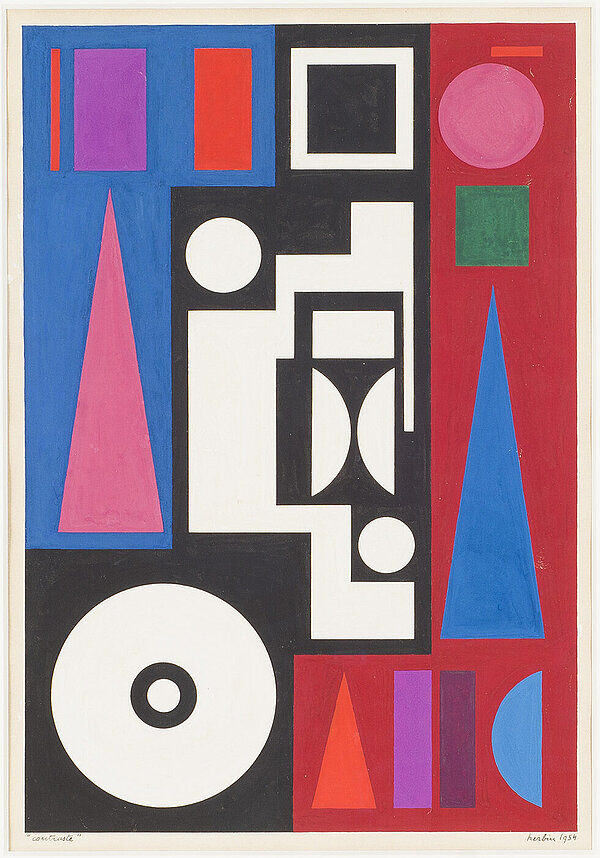Auguste Herbin
contraste, 1954
Gouache on paper
50 x 34 cm
© VG Bild-Kunst, Bonn 2025
Photo: Gerhard Sauer
Auguste Herbin came from a family of artisans in the north of France and remained his life long a convinced Socialist. His creative output from 1900 to 1926 is marked by a number of representational and abstract phases: after first occupying himself with Impressionism and Fauvism, by 1909 he was living as a neighbour of Pablo Picasso, Georges Braque and Juan Gris in Montmartre, Paris, and developing his own Cubist style. Herbin also undertook a deep study of Robert Delaunay’s Orphism. The works he produced during these years evince a progressive reduction and geometrisation in the forms, accompanied by intensive coloration and rhythmicity. From 1926 onward his work was purely abstract.
Together with Georges Vantongerloo and Theo van Doesburg, among others, in 1931 Auguste Herbin founded the artists’ group Abstraction-Création in Paris. The goal of this international group, which lasted until 1936, was to provide a forum for abstract art. Herbin constantly sought out possibilities for non-representational, planar colour compositions. From around 1940 his works “quietened down”: the dynamic spiral shapes of the thirties almost completely disappeared and from then on the coloured shapes were arranged next to one another, almost without any overlap, like modules that produce a harmonious whole.
Around 1942–44 Herbin developed his own artistic system, which he termed “alphabet plastique” [plastic alphabet]. He assigned not only sounds and colours to the letters, but also geometrical shapes such as the square, the circle, the arc and the triangle. Central here was not so much a mathematical as a spiritual inquiry. Herbin’s system prompts thoughts of an arcane, inner connection between form, letter and sound that may be deciphered by means of his visual code. Both Goethe’s colour theory and anthroposophy provided the artist with inspiration as he forged his synaesthetic principle. Although he produced abstract compositions, something objective remained in his works up until his death in 1960, as for instance when an evening mood in a landscape is alluded to by the colours and the compositional means. As a key figure of the post-war Parisian avant- garde, Herbin exerted an influence on a number of artists in the younger generations who were working in the abstract geometrical metier, including Victor Vasarely and Günter Fruhtrunk.
The painting shown here, contraste, has been divided into three self-contained areas with variously a blue, a black and a red background. The step-shaped black area in the lower left and central area has been given a static structure by means of the inner white forms. It stands out vibrantly from the outer sections that flank it, whose geometrical, in part upwardly directed shapes are animated by the antithesis between warm and cold colours. (Marjatta Hölz)
Auguste Herbin
1882 born in Quiévy (FR)
1960 died in Paris


